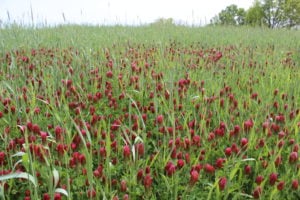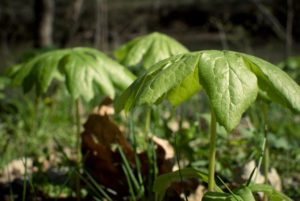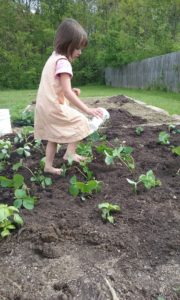The calendar says July 29, which for many hints that summer may soon be on its way out. After all, you can’t step into your local Wal-Mart without getting bombarded by back-to-school supplies and supply lists. Technically, the first day of autumn isn’t until September, and let’s face it, the mercury isn’t dropping anytime soon. While we’re still in the throes of summertime, we’ll look at a few tips for keeping your garden happy, from the soil and even the weeds, as well as looking ahead to the fall.
Soil
Everyone knows that a healthy soil profile is essential for a healthy garden. With summer’s high heat and humidity comes a rise in soil temperatures, and just like too cool of soil, too warm of soil can also be detrimental to plants. To ensure adequate temperatures for planting, obtain a soil thermometer and take frequent readings. It doesn’t have to be expensive or fancy. Cool your soil before planting by moistening the day before you intend to plant. If you’re planting fall beans or peas, sow the seeds a little deeper than directed; soil closest to the surface is the warmest. After planting, keep the soil covered with layers of grass clippings or mulch; covered soil retains moisture and remains shaded. Keep on any coverings until the seeds germinate, after which any coverings can be removed to allow light exposure. Lastly, if some of your plants are just not thriving or germinating, it may be a deeper soil issue; obtain a soil sample and have it tested.
Weeds
It’s amazing how weeds can seem to take over in a matter of days. Like managing pests, sometimes with weeds the goal is not to eliminate every single one, but rather control the populations that are already present. Make it a daily habit to inspect your garden beds/rows daily and pull up any overgrown or unsightly weeds. You can also solarize, which is a process that involves laying down sheets of plastic and allowing the sun and heat to scorch the weeds until they die. Some producers who grow in high tunnels use this method. It’s best to pull weeds when the soil is moist, so plan your weeding after irrigation for best capture. If your summers are especially brutal, after your seeds have germinated, invest in some lightweight material to use as shade covers, such as an old bed sheet. Just make sure the material is permeable enough for some light to pass through.
Water
Gardens need an inch of water per week, whether that comes from humans or the elements. It may be ideal to invest in a rain gauge to accurately monitor water levels in your garden. In the meantime, during summer heat, water as close to the root systems of your plants as possible. If you’re experiencing a drier summer than usual, it may be necessary to water an additional day or two per week. Avoid watering during the afternoon, when the sun is most intense, or during the evening, as residual moisture can linger into the overnight hours and potentially lead to disease. Water first thing in the morning.
A few additional summer tips:
-Stay on top of harvesting. The more plants are harvested, the more they will produce. Summer heat can allow certain plants to bolt, or go to seed, greatly reducing their viability and flavor.
-If you have a compost pile, now is an opportune time to make sure the pile is not too dry. Too little moisture will not allow the pile to obtain sufficient heat. Make sure the pile is turned to allow for proper aeration.
–Take care of yourself also! UV rays are strongest during the hours of 10am to 3pm, so if possible, avoid working in the garden during those hours. If you must, take frequent breaks and stay hydrated!
Looking Ahead to Fall
Why stop your garden in August? There is still plenty of growing season, and many gardeners have turned to a fall garden for bountiful harvests of root vegetables, lettuce, beans, greens, and so many other wonderful crops. Many fall crops can be started as soon as 10-12 weeks prior to the estimated first frost (see Resources); keep in mind this is for transplants, not sowing directly from seed. When obtaining fall plants, look for varieties with shorter maturity dates, anywhere from 40-60 days. Crops like broccoli, radishes, and most salad greens, such as chard, arugula, and spinach, are suitable. Also, lettuces and other greens can be sown successively until well into September. Side note: succession planting is continuous sowings spanned out approximately every 7-14 days for streamlined harvests.
If you don’t have any plans for a fall garden, consider planting a fall/winter cover crop in order to replenish nutrients and increase organic matter for the following growing season. Buckwheat, sweet clover, and field peas are excellent choices for fall cover crops, and winter rye, hairy vetch, and crimson clover are suitable for winter varieties. For optimum results, and contingent upon your needs, you can also try cover crop mixes. Popular mixes include winter peas/oats and winter peas/rye. Although cover crop mixes provide higher quantities of biomass than single varieties, they are often more costly and more difficult to sow.
How is your summer garden growing, or are you daydreaming already for fall plans? Share your pictures, stories, and successes (or struggles) with us, and until next time, happy gardening!
Resources/Further Reading:
Late Summer Gardening from Mother Earth News
Inclement weather gardening from Grow Appalachia HQ
July garden chores from A Way to Garden





Leave A Comment